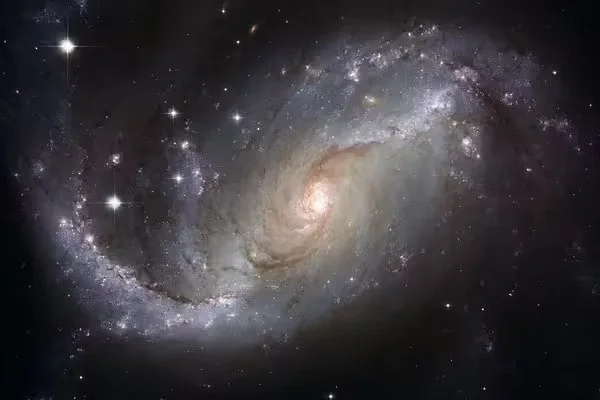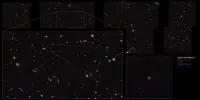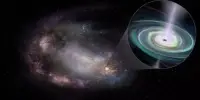Gravitational interactions between a planet and its protoplanetary disk cause the planet’s orbit to shift toward or away from its star. Migration rates for low-mass bodies are poorly constrained, but giant planets are relatively well understood. Significant migration will have an impact on the details and efficiency of planet formation in both cases. If the disk is turbulent, density fluctuations will excite orbital eccentricities, causing orbits to walk randomly. Both processes are most likely harmful to planet formation.
Rice University scientists and their collaborators are the first to use computer simulations to integrate a model of planet formation and evolution that explains two puzzling observations of exoplanets orbiting distant stars: the scarcity of worlds 1.8 times the size of Earth and the near-identical size of adjacent planets in hundreds of planetary systems.
A new model that accounts for the interaction of forces acting on newborn planets can explain two perplexing observations that have repeatedly arisen among the more than 3,800 planetary systems cataloged to date.
The “radius valley” mystery refers to the scarcity of exoplanets with a radius of about 1.8 times that of Earth. The Kepler spacecraft of NASA observed planets of this size about 2-3 times less frequently than super-Earths with radii about 1.4 times that of Earth and mini-Neptunes with radii about 2.5 times that of Earth. The second mystery, dubbed “peas in a pod,” refers to neighboring planets of comparable size discovered in hundreds of planetary systems. TRAPPIST-1 and Kepler-223, for example, have planetary orbits that are nearly musical in harmony.
The migration of young planets towards their host stars creates overcrowding and frequently results in cataclysmic collisions that strip planets of their hydrogen-rich atmospheres. That means giant impacts, like the one that formed our moon, are probably a generic outcome of planet formation.
André Izidoro
“I believe we are the first to explain the radius valley using a model of planet formation and dynamical evolution that self-consistently accounts for multiple constraints of observations,” said Rice University’s André Izidoro, corresponding author of a study published this week in Astrophysical Journal Letters. “We’re also able to show that a planet-formation model incorporating giant impacts is consistent with the peas-in-a-pod feature of exoplanets.”
Izidoro, a Welch Postdoctoral Fellow at Rice’s NASA-funded CLEVER Planets project, and co-authors used a supercomputer to simulate the first 50 million years of the evolution of planetary systems using a planetary migration model.
In the model, protoplanetary disks of gas and dust that give rise to young planets interact with them, drawing them closer to their parent stars and locking them in resonant orbital chains. The chains are broken within a few million years, when the disappearance of the protoplanetary disk causes orbital instabilities that cause two or more planets to collide.

Planetary migration models have been used to investigate planetary systems that have retained their resonant orbital chains. For example, Izidoro and his CLEVER Planets colleagues used a migration model in 2021 to calculate the maximum amount of disruption TRAPPIST-1’s seven-planet system could have absorbed during bombardment while maintaining its harmonious orbital structure.
In the new study, Izidoro collaborated with Rice researchers Rajdeep Dasgupta and Andrea Isella, Hilke Schlichting of the University of California, Los Angeles, and Christian Zimmermann and Bertram Bitsch of the Max Planck Institute for Astronomy in Heidelberg, Germany.
“The migration of young planets towards their host stars creates overcrowding and frequently results in cataclysmic collisions that strip planets of their hydrogen-rich atmospheres,” Izidoro said. “That means giant impacts, like the one that formed our moon, are probably a generic outcome of planet formation.”
According to the research, planets come in two “flavors”: super-Earths, which are dry, rocky, and 50% larger than Earth, and mini-Neptunes, which are rich in water ice and about 2.5 times larger than Earth. New observations, according to Izidoro, appear to support the findings, which contradict the traditional view that both super-Earths and mini-Neptunes are exclusively dry and rocky worlds.
Based on their findings, the researchers made predictions that NASA’s James Webb Space Telescope can test. They propose, for example, that a fraction of planets about twice the size of Earth will retain their primordial hydrogen-rich atmosphere while also being rich in water.














